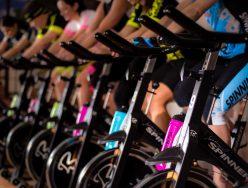Last month we talked about working with children with physical disabilities.
We will continue the discussion of physical impairments with visual, hearing and speech and language impairments.
 Visual Impairments
Visual Impairments
A visual impairment is more than someone who wears eyes glasses. Their visual acuity is 20/70 or less, and they will struggle with vision, even when using a corrective prescription. A trainer or teacher may assist the student by using verbal directions and by asking the student for how the student learns best. Because of their limited vision, the student often has poor motor skills and displays easy fatigue. Ask them how they would feel comfortable being guided. Give students mental pictures and descriptive words. Simplifying the game or skill is also effective. Also, give a mental picture of the environment and have a student helper that can stay with the participant as they participate in the activity. If the child is partially sighted use reflective tape for visual guidance.
Hearing Impairments
Those students who are hard of hearing and deaf may benefit from the use of sign language, lip reading, or written directions. These students often have hearing aids, cochlear implants or other hearing devices. Face the person when you are signing or talking with them, demonstrate, increase the hands-on experience of the activity, and ask them to repeat anything that they did not understand. Reduce distractions and background noises. When talking to the hearing-impaired, face the person because they need to see your face to read your lips and see your gestures.

Speech or Language Disability
Some children have a hard time understanding what other people are saying. Students often do not hear greetings and mix up words and sounds. They suffer from disorganization, trouble with rote learning, noisy environments, and have difficulty following conversations. Some students struggle with expressive language and others have difficulty with receptive language, despite the fact that they are in a regular classroom. It is best with these children to use sign language, if they use it, visual or written directions, and a schedule. It is also perfectly acceptable to use a chalkboard, dry erase board or pad of paper to communicate. A buddy is also effective, and most students enjoy taking a turn being someone’s assistant. Next month we will continue with part three on motor skill disabilities and sensory differences.
Was this Article Helpful?
If this article was helpful to you, please consider linking this article to your own blog or sharing this through the social buttons below. You will also find other great articles at “Special Populations“.
- 0share
- 0Facebook
- 0Twitter
- 0Pinterest
- 0LinkedIn
Christina Chapan
Latest posts by Christina Chapan
- Body Language for Personal Trainers,Teachers and Group Instructors - January 12, 2020
- Allergies + Exercise: An Overview - January 9, 2020
- The Safety of Running Solo - January 5, 2020





 Visual Impairments
Visual Impairments












